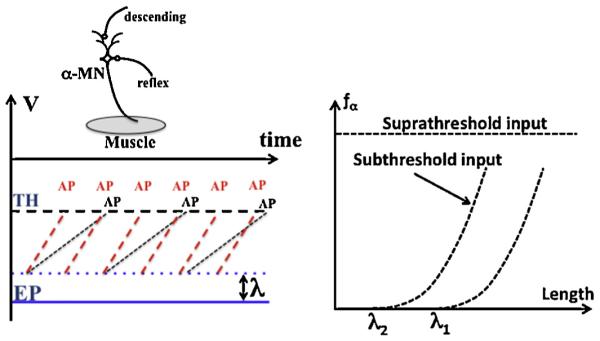Fig. 2.

Consider two inputs into a neuron, descending and reflex (top insert). Left panel: The neuron generates action potentials (only marked as AP, not drawn) when the membrane potential reaches the threshold value (TH) (left panel). Without excitatory inputs, the membrane is at equilibrium potential (EP). Membrane subthreshold depolarization (λ) moves the membrane potential closer to TH. Reflex feedback leads to ramp-like depolarization of the membrane (black ramps and AP for a shorter muscles, red ramps and AP for a longer muscle). The frequency of AP generation depends on the reflex input. Right panel: For a suprathreshold input, the neuron would generate action potentials at the highest possible frequency. Membrane subthreshold depolarization (λ) shifts the dependence of the neuron firing frequency (fα) on muscle length (compare the two curves in the right panel). (For interpretation of the references to colour in this figure legend, the reader is referred to the web version of this article.)
